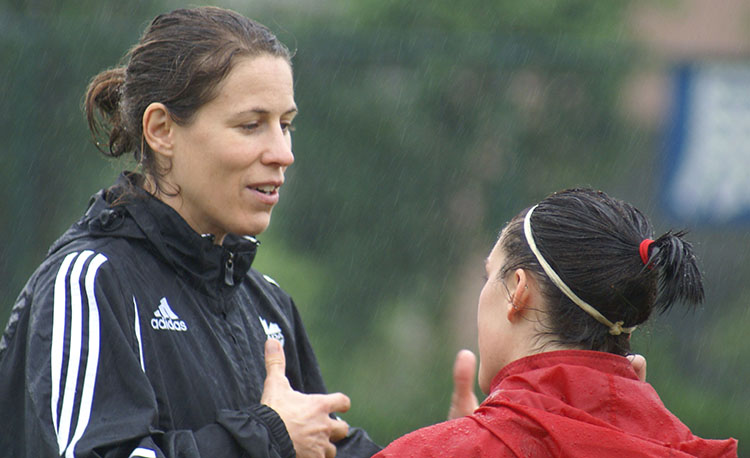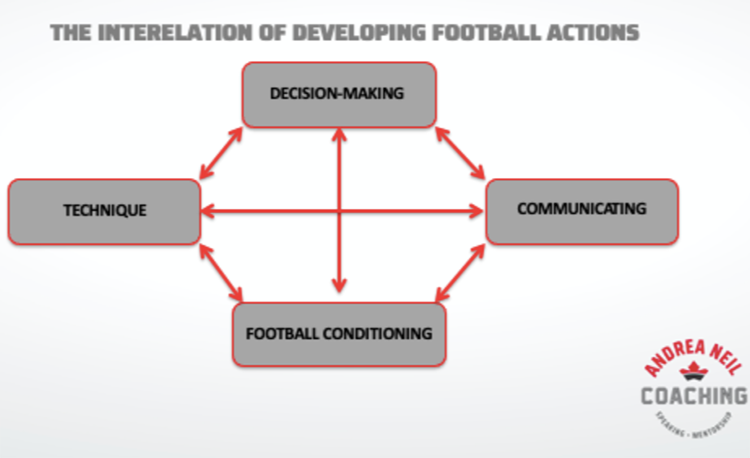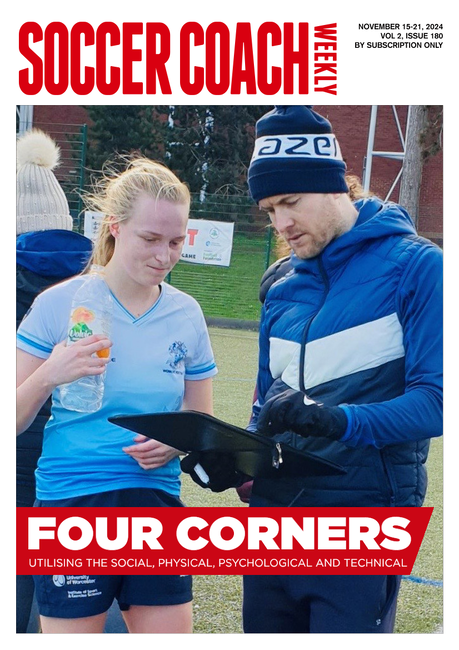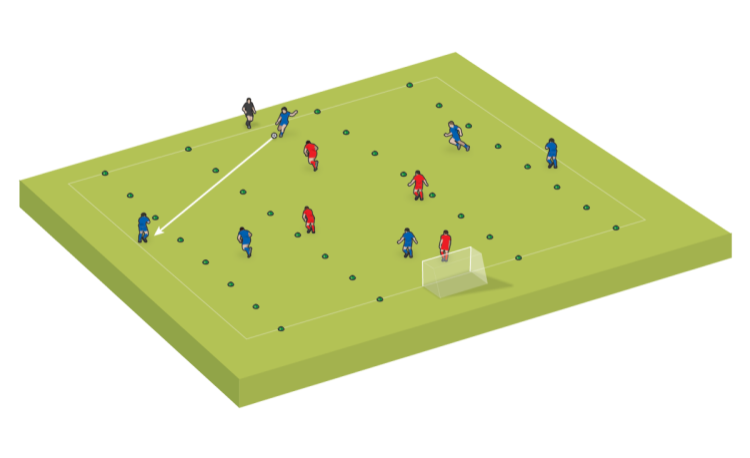Developing the 'under-developed'
Movements in skill execution and problem-solving abilities are vital in unlocking the potential in individuals and your team, writes ex-Canada star Andrea Neil
Have you ever wondered why certain players perform well against an average opponent, only to find themselves exposed in the next match by a higher-level team?
These players are often labeled with phrases such as ‘not ready’ or ‘not technical enough’ - and, at the same time, don’t often receive an accurate assessment of where and how they need to improve.
Some coaches may simply not even know specifically why their players are ‘not good enough,’ while others may find it extremely difficult and time consuming to break down the individual technical execution and/or decision-making for every athlete on a team.
The drawback to these time and resource restrictions is that athletes who have issues at one level or another may go uncorrected for a prolonged, even indefinite, period of time.
For example, a player with solid technique may not necessarily able to use it at the relevant time and/or for the relevant situation, or even know how to apply this technique in communication and co-ordination with their teammates.
Conversely, a player with good game insight may be unable to receive a pass effectively, due to deficiencies with their movement, technical quality or level of physical conditioning.
In either case, these players will only be able to contribute partially to the overall team performance.
Here’s the thing though. Only a team can fulfill the objective of the game - but the role of the individual is important in allowing the team to do this.
If you ultimately want to improve your team’s performance as a whole, then you must have the aim of developing the quality of each player’s soccer actions within your team.
This means that each player is given the opportunity to become better and more effective at passing, getting open, shooting, pressuring, heading, creating space, pressing, clearing, dribbling and so forth.
These skills are the resources that each player has at their disposal to help contribute to the team’s overall objective, of scoring one more goal than your opponent.
"I may give detailed instructions on body movement and how it related to execution..."
The question is: how are the individual players executing these qualities. Are they effective or not?
The areas of movement and problem solving are fundamental to soccer and to the development of the overall football action for each player. It is here where I love to go to work and have found several key areas of underdevelopment in this regard.
I start the process of developing more effective soccer actions by observing the player in their warm-up or when they execute an action, such as dribbling the ball towards an opponent.
Depending on what I see, I may give the player very detailed instructions in terms of their body movements and how this relates back to their execution of a soccer action.
For example, this might look like asking the player to become more aware of co-ordinating their upper body with their lower body or having an awareness of how high or low their body positioning is when they move.
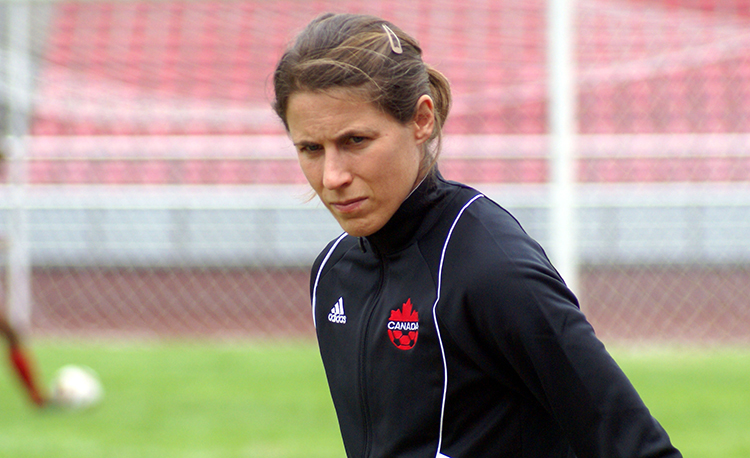
I may ask the player to refine how they distribute their weight through their feet or load their planting leg when doing one action versus another.
At other times, the work in this way could be to help support a player with the development of their jumping and landing mechanics, or how to accelerate and decelerate more effectively.
In cases such as these, I find that I need to strip away many of the elements of a football action in order to improve their movement effectiveness first.
When a player becomes more skilled in this way, we need to go to work on building in the other layers of what makes an effective football action.
The development of football actions, such as shooting or dribbling, involves a complex interrelation and interconnection of many variables (see image below).
Related Files
The act of dribbling is not an isolated technique. The underlying movements to each technique, the technique itself and the intensity of the overall football action, through their football conditioning, must be developed along with a player’s game insight - their decision-making at an individual level.
A player needs to understand why it may be important to dribble as opposed to passing the ball at a particular moment in the game. Along with this understanding, the player must also know when it is best to dribble, how it is best to dribble and to where.
Each player then needs to understand how to link these interrelated individual aspects in co-ordination, through communication, often non-verbally, with their other teammates, so that the next football action can ensue.
When players develop more clarity and competence, they develop more skills and understanding as people. And when they begin to develop more skills and understanding as people, they become more confident as players.
Building in this way, through the development of the individual, will have the consequence of impacting the overall team performance positively in the end.
Of course, learning how to create space, dribble, shoot, and pressure the ball are not the only things that go into building and developing players, but they are very key aspects to develop.
It is within the process of coaching and mentoring others in this way that I learn a lot as a person myself.
I am constantly inspired by the athletes and the coaches that I get the opportunity to walk alongside through their own processes of growth and development as people and players; I feel truly blessed.
Newsletter Sign Up
Coaches Testimonials

Gerald Kearney, Downtown Las Vegas Soccer Club

Paul Butler, Florida, USA

Rick Shields, Springboro, USA

Tony Green, Pierrefonds Titans, Quebec, Canada
Subscribe Today
Discover the simple way to become a more effective, more successful soccer coach
In a recent survey 89% of subscribers said Soccer Coach Weekly makes them more confident, 91% said Soccer Coach Weekly makes them a more effective coach and 93% said Soccer Coach Weekly makes them more inspired.
*includes 3 coaching manuals
Get Weekly Inspiration
All the latest techniques and approaches
Soccer Coach Weekly offers proven and easy to use soccer drills, coaching sessions, practice plans, small-sided games, warm-ups, training tips and advice.
We've been at the cutting edge of soccer coaching since we launched in 2007, creating resources for the grassroots youth coach, following best practice from around the world and insights from the professional game.
